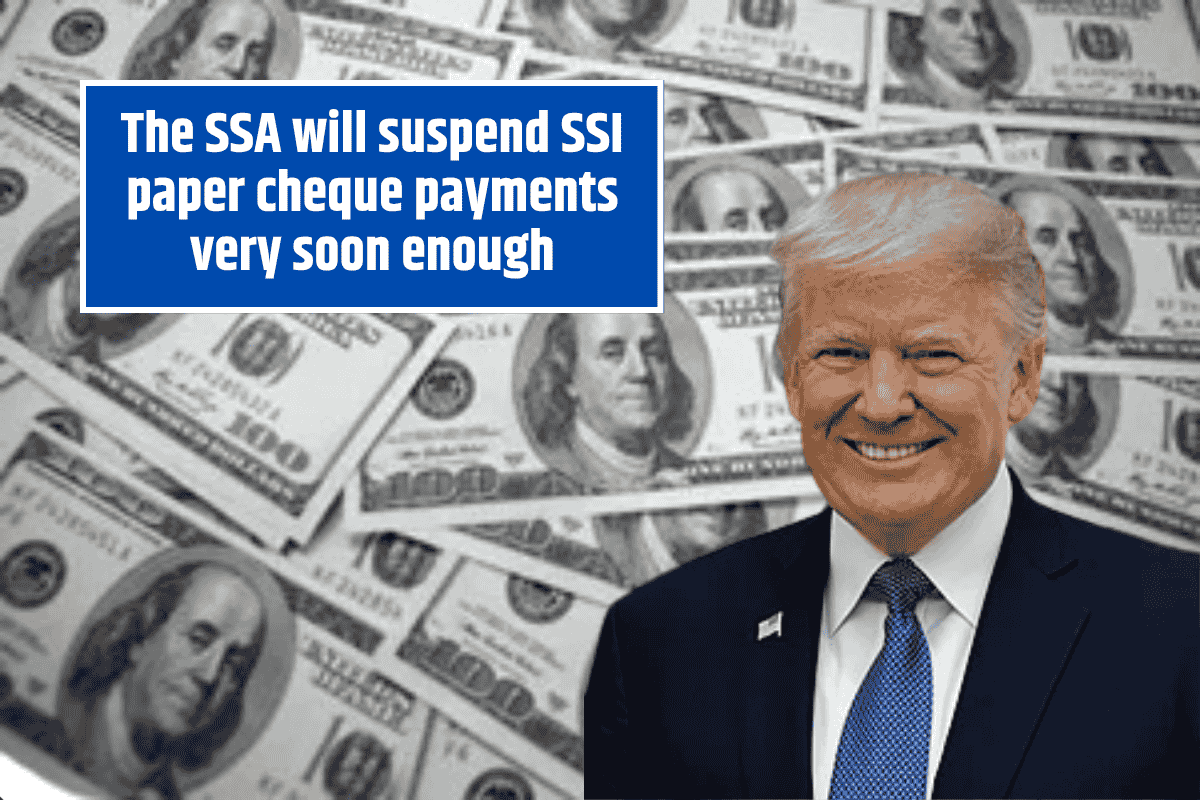For over half a million Americans, the sound of the mailbox flap opening and the weight of a government envelope have been part of their monthly routine. These paper checks are more than just payments; they’re lifelines for retired seniors, rural residents, and those disconnected from digital banking.
But this all changes on September 30, 2025. Starting October 1, 2025, the U.S. government will stop sending paper checks for Supplemental Security Income (SSI), Disability Insurance (SSDI), federal retirement benefits, and other Social Security payments.
Why Is the Federal Government Phasing Out Paper Checks?
The federal government’s decision to end paper checks comes with a series of practical and financial motivations.
Cost savings: Printing and mailing paper checks costs taxpayers a staggering $650 million each year. On top of that, processing a single paper check costs around $1, while processing an electronic payment only costs about $0.10.
By going digital, the government expects to save nearly $1 billion over the next ten years. This is money that could be better spent on social programs that directly benefit recipients.
Fraud prevention: Paper checks are vulnerable to theft, loss, and alteration. Every year, over half a million checks go missing or get stolen. With digital payments, transactions are far more secure and trackable, reducing the risk of fraud for those who rely on these payments.
Efficiency: Paper checks lead to delays, operational headaches, and inefficiencies. Electronic payments are faster, cheaper, and easier to manage. This is part of a broader push to modernize the federal payments system, in line with a March 2025 executive order that mandates digital payments for all federal disbursements.
The Risks of the Switch: What’s at Stake?
For many, the switch to electronic payments poses serious challenges. Some beneficiaries, particularly older adults, individuals with disabilities, and those in rural areas, may not have access to the internet or bank accounts. For them, this transition could feel overwhelming and risky.
The biggest concern? Payment interruption. If recipients fail to switch to a digital payment method before the September 30, 2025 deadline, they will face a pause in their payments. For many, this could mean missing out on the money they need for essentials like food, rent, and medicine.
Additionally, the shift might not be as easy as it sounds. Many beneficiaries lack digital literacy or access to the resources necessary to make the change. Local Social Security offices are fewer, with fewer staff available to help.
The fear that elderly or disabled individuals will be left without a lifeline is a very real concern for millions of families.
How to Prepare for the Switch
To avoid payment disruptions and ensure a smooth transition, it’s crucial to act as soon as possible. Here’s what you can do:
- Sign up for Direct Deposit: This is the easiest and safest way to receive payments. Simply log into your My Social Security account at ssa.gov and add your bank account details. If you don’t have a bank account, the Direct Express prepaid card is another option. This card is specifically designed for those who do not have a bank account.
- Choose Your Payment Method: If direct deposit is not an option for you, there are alternative ways to get your payments. You can opt for the Direct Express card or ask about setting up a digital wallet. The Direct Express card is widely accepted and works like a regular debit card.
- Get Help if You Need It: If you’re unable to make the change yourself, or if you lack the resources to go digital, contact the Social Security Administration at 1-800-772-1213. You can also visit a local office (appointments are required), but be aware that many offices are reducing staff. For those in truly difficult situations, such as disabilities or extreme isolation, call the U.S. Treasury at 855-290-1545 to inquire about temporary exceptions.
- Stay Secure: Once you’re set up for digital payments, protect your accounts. Set up bank alerts for every transaction. You can also use USPS Informed Delivery to track your mail digitally and stay on top of any physical mail that arrives.
The end of paper checks for Social Security and SSI benefits represents a massive shift towards digital payments that will affect millions of Americans. While the transition promises efficiency, cost savings, and greater security, it also poses risks, particularly for those who are not digitally savvy or lack access to the necessary tools.
To avoid any interruptions in payments, it’s essential to switch to electronic deposits now, well before the September 30, 2025 deadline. Whether through direct deposit, the Direct Express card, or a digital wallet, taking action today will ensure you don’t miss a single payment when the paper checks are gone.
